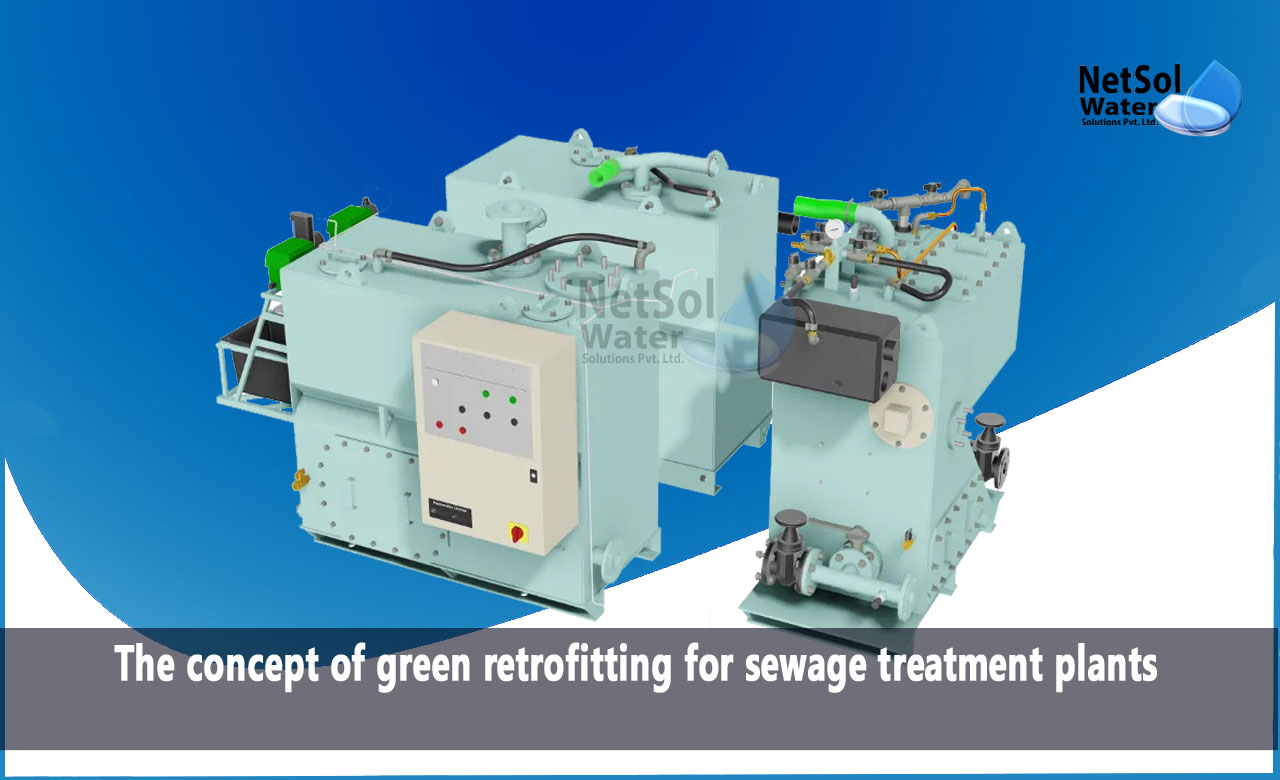What is the green retrofitting for sewage treatment plants?
As we strive to build a sustainable future, it becomes increasingly important to reevaluate our existing infrastructure and identify opportunities for improvement. One area that holds immense potential is sewage treatment plants. These essential facilities, which play a crucial role in managing wastewater, can be retrofitted with green technologies and innovative solutions to enhance their efficiency and reduce their environmental impact.
This blog explores the concept of green retrofitting for sewage treatment plants and how it contributes to overall sustainability goals.
Understanding Sewage Treatment Plants
Sewage treatment plants are vital components of urban infrastructure that process and treat wastewater from homes, businesses, and industries. Their primary objective is to remove pollutants, organic matter, and pathogens from the water before it is discharged back into the environment. Traditionally, these plants have relied on energy-intensive processes and outdated technologies, leading to high operational costs and significant environmental consequences.
Green Retrofitting: A Path to Sustainability
Green retrofitting involves upgrading existing infrastructure with eco-friendly technologies and practices. When applied to sewage treatment plants, it can help minimize their ecological footprint while improving their overall performance. Here are some key aspects of green retrofitting for sewage treatment plants:
- Energy Efficiency: Energy consumption is a significant aspect of sewage treatment plant operations. By incorporating energy-efficient equipment and optimizing processes, such as using variable frequency drives and advanced control systems, plants can reduce their energy consumption and lower their carbon footprint.
- Renewable Energy Integration: Integrating renewable energy sources, such as solar panels or wind turbines, into sewage treatment plants can provide a sustainable and reliable source of power. Excess energy generated can be fed back into the grid, contributing to the local energy supply and reducing reliance on fossil fuels.
- Resource Recovery: Sewage contains valuable resources such as nutrients, organic matter, and water. Green retrofitting can include implementing technologies to recover and reuse these resources. For example, anaerobic digestion can be employed to produce biogas from organic waste, which can be utilized as an energy source or converted into biofuels.
- Natural Treatment Systems: Traditional sewage treatment plants often rely heavily on chemical processes. Green retrofitting involves incorporating natural treatment systems, such as constructed wetlands or biofiltration, which utilize natural processes to remove pollutants. These systems are not only effective but also aesthetically pleasing, providing additional ecological benefits and enhancing biodiversity.
- Water Conservation: Water scarcity is a pressing global issue, and sewage treatment plants can contribute to water conservation efforts. Implementing advanced water management strategies, such as water recycling and rainwater harvesting, can reduce freshwater consumption and promote sustainable water use.
Benefits and Challenges
Green retrofitting of sewage treatment plants offers several benefits. Firstly, it reduces the ecological impact of wastewater treatment, preserving water resources and protecting ecosystems. Secondly, it enhances energy efficiency, lowering operational costs and contributing to a greener energy grid. Moreover, it stimulates local economies by creating new job opportunities in the green technology sector.
However, implementing green retrofitting initiatives may pose certain challenges. Upgrading existing infrastructure can be expensive, requiring financial investments and careful planning. Additionally, it may necessitate workforce training and expertise to ensure smooth integration and operation of new technologies. Overcoming these challenges requires collaboration among government bodies, utility companies, and environmental organizations.
Conclusion
Sewage treatment plants are critical components of urban infrastructure, and retrofitting them with green technologies and sustainable practices holds immense potential for enhancing their efficiency and reducing their environmental impact. Green retrofitting can transform these facilities into eco-friendly hubs that not only treat wastewater effectively but also contribute to broader sustainability goals. By embracing green retrofitting, we can pave the way for a more sustainable and resilient future, where our infrastructure works in harmony with the environment.
Remember, the path to sustainability lies in our ability to reimagine and enhance existing systems, and sewage treatment plants are a prime example of how infrastructure can be retrofitted for a greener and more sustainable tomorrow.
Netsol Water is Greater Noida-based leading water & wastewater treatment plant manufacturer. We are industry's most demanding company based on client review and work quality. We are known as best commercial RO plant manufacturers, industrial RO plant manufacturer, sewage treatment plant manufacturer, Water Softener Plant Manufacturers and effluent treatment plant manufacturers. Apart from this 24x7 customer support is our USP. Call on +91-9650608473, or write us at enquiry@netsolwater.com for any support, inquiry or product-purchase related query.



